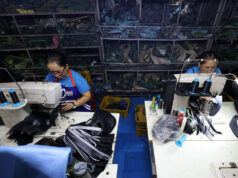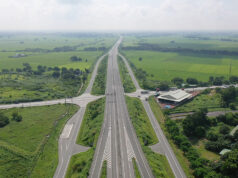Moody’s keeps credit rating for Philippines
MOODY’S Investors Service on Thursday kept its Baa2 rating with a stable outlook for the Philippines, saying the country’s strong fiscal position in recent years will help shield it from the impact of the coronavirus crisis.
In a statement, the credit rater said it expects a pause in policy reforms amid the current crisis, which could also put on hold improvements in the country’s credit profile that are needed to secure a rating upgrade to “A.”
“The rating affirmation and stable outlook reflect Moody’s view that the fortification of the government’s fiscal position in recent years provides a buffer against a rise in public indebtedness due to shocks such as the ongoing global coronavirus outbreak,” Moody’s said.
Moody’s has maintained its Baa2 rating for the Philippines since December 2014.
Meanwhile, “stable” outlook suggests the rating is likely to be maintained over the next six months to two years.
Moody’s said one factor that could lead to an upgrade of the Philippine sovereign rating is an evident, more rapid reversal of the deterioration in fiscal and debt metrics caused by the pandemic.
“This would likely entail a sustained restoration of economic growth to rates similar to those recorded prior to the outbreak. Together, a resumption of sustained high growth and rapid restoration of fiscal strength would denote particularly effective macroeconomic and fiscal policy,” it said.
On the other hand, Moody’s flagged the “emergence of macroeconomic instability that would lead to a greater deterioration in fiscal and government debt metrics and/or an erosion of the country’s external payments position.”
Amid the global coronavirus crisis, Moody’s has already downgraded the credit rating of 20 sovereigns as of end-June. It has likewise assigned a “negative” outlook on the ratings of 19 sovereigns and has put 12 others under review for possible debt rating downgrade.
Earlier this month, the debt watcher gave a -4.5% outlook for the Philippine economy in 2020 given the worsening fallout from the virus. This is much lower than the -2% it gave in May and the baseline 6.2% growth estimate last year.
The latest 6.5% growth outlook for 2021 is a tad faster than the previous 6.4% penciled.
The country’s gross domestic product has already dropped by 0.2% in the first quarter of the year due to the virus outbreak as well as the Taal Volcano eruption.
Economic officials from the government said Moody’s affirmation of the country’s rating was a welcome development during the crisis.
“What separates our country from most virus-hit economies is that we were caught up in this global health crisis with ample buffers to cushion its fallout while keeping our debt level manageable and without compromising our fiscal health,” Finance Secretary Carlos G. Dominguez III was quoted as saying in a statement from the Investor Relations Office.
“While the economy will contract this year, its prospects for a strong rebound next year and future years are bright,” Bangko Sentral ng Pilipinas Governor Benjamin E. Diokno said.
Moody’s said the bleak economic backdrop and political considerations will likely affect structural reforms meant to build on recent gains on improving investment climate and assisting in fiscal consolidation.
“So long as the coronavirus outbreak remains unresolved, lawmakers will likely retain their focus on facilitating the near-term recovery from the pandemic shock,” it said.
Moreover, the global debt watcher said the impending general election in 2022 leaves the government a “comparatively short window to pursue its legislative agenda.”
In May, S&P Global Ratings also affirmed its “BBB+” long-term credit rating with a stable outlook for the Philippines while Fitch Ratings kept the country’s credit rating at “BBB” but downgraded its outlook to “stable.” — Luz Wendy T. Noble



